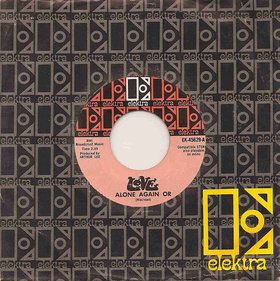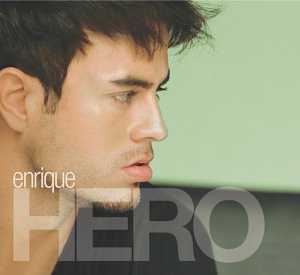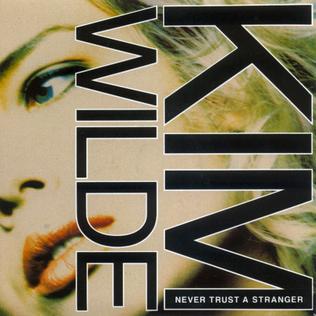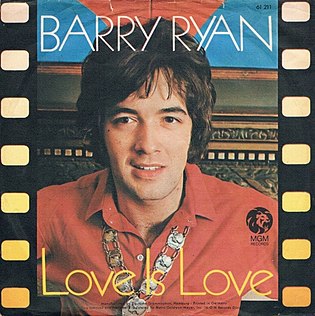
The Damned are an English punk rock band formed in London in 1976 by lead vocalist Dave Vanian, guitarist Brian James, bassist Captain Sensible and drummer Rat Scabies. They were the first punk band from the United Kingdom to release a single, "New Rose" (1976), release a studio album, Damned Damned Damned (1977) and tour the United States. Nine of the band's singles charted on the UK Singles Chart Top 40.

Barry Ryan, also known as Barry Davison, was an English pop singer and photographer. He achieved his initial success in the mid 1960s in a duo with his twin brother Paul. After Paul ceased performing to concentrate solely on songwriting, Barry became a solo artist. Barry's most successful hit, "Eloise", reached number 2 on the UK Singles Chart in 1968.
Paul Ryan was an English singer, songwriter and record producer.

Phantasmagoria is the sixth album by U.K. punk rock band the Damned, released by MCA in July 1985. Special editions were available on white vinyl or picture disc; some versions included a free 12-inch of their No. 3 hit "Eloise". It is the first album by the band without original member Captain Sensible, and was a style shift to gothic rock compared to the band's punk sound of its early and later career.

"Son of a Preacher Man" is a song written and composed by American songwriters John Hurley and Ronnie Wilkins and recorded by British singer Dusty Springfield in September 1968 for the album Dusty in Memphis.

"Help!" is a song by the English rock band the Beatles that served as the title song for the 1965 film and the band's accompanying soundtrack album. It was released as a single in July 1965, and was number one for three weeks in the United States and the United Kingdom.

"River Deep – Mountain High" is a song by Ike & Tina Turner released on Philles Records as the title track to their 1966 studio album. Produced by Phil Spector and written by Spector, Jeff Barry and Ellie Greenwich. Rolling Stone ranked "River Deep – Mountain High" No. 33 on their list of the 500 Greatest Songs of All Time. NME ranked it No. 37 on their list of the 500 Greatest Songs of All Time. The Rock and Roll Hall of Fame added it to the list of the 500 Songs That Shaped Rock and Roll. The song was inducted into the Grammy Hall of Fame in 1999.

Sugar, Sugar is a song written by Jeff Barry and Andy Kim. It was originally recorded by the Archies, a fictional band of studio musicians linked to the 1968–69 US Saturday morning TV cartoon The Archie Show, inspired by the Archie Comics. In the autumn of 1969 the single topped both Billboard's Hot 100 and the UK Singles Chart, ranking number one for the year in both America and Britain. “Sugar, Sugar” is the most successful bubblegum pop single of all time, and is widely regarded as the apotheosis of the late-1960s/early-1970s bubblegum music genre. In mid-1970 R&B/soul singer Wilson Pickett achieved success on both the US soul and pop charts with a cover version.

"Alone Again Or" is a song originally recorded in 1967 by the rock group Love and written by band member Bryan MacLean. It appears on the album Forever Changes, and was released as a single in the USA, UK, Australia, France and the Netherlands.

"Could It Be Magic" is a song written by Adrienne Anderson and composed by Barry Manilow, inspired by Frédéric Chopin's Prelude in C minor, Opus 28, Number 20.

"Hero" is a song by Spanish singer-songwriter Enrique Iglesias from his second English-language studio album Escape (2001). It was written by Iglesias, Paul Barry and Mark Taylor. Interscope Records released the song on 31 August 2001 to a positive critical and commercial reception. To the date the single has sold over 8 million copies worldwide, making it one of the best selling singles of all time.

"Never Trust a Stranger" is a song by English singer-songwriter Kim Wilde, released as the third single from her sixth album, Close (1988). Remixed from the original album track by producer Ricki Wilde, it was released in the autumn of 1988 by MCA and KIM 9 following the best-selling hit "You Came" and several European tour dates supporting Michael Jackson. It became another big hit in Europe, peaking within the top 10 in Austria, Belgium, Denmark, Ireland, the Netherlands, Switzerland and United Kingdom. An extended version of the single remix was released on the 12" and CD-single formats, and a different remix ('Sanjazz") was released in the UK on an alternative 12" single.

"Comment te dire adieu" is a French adaptation of the song "It Hurts to Say Goodbye". It was originally recorded by Françoise Hardy in 1968.

"Barbie Girl" is a song by Danish-Norwegian dance-pop group Aqua. It was released in April 1997 by Universal and MCA as the third single from the group's debut studio album, Aquarium (1997). The song was written by band members Søren Rasted, Claus Norreen, René Dif, and Lene Nystrøm, and was produced by the former two alongside Johnny Jam and Delgado. It was written after Rasted saw an exhibit on kitsch culture in Denmark that featured Barbie dolls. The accompanying music video was directed by Danish directors Peder Pedersen and Peter Stenbæk.

"I Love How You Love Me" is a song written by Barry Mann and Larry Kolber. It was a 1961 Top Five hit for the pop girl group The Paris Sisters, which inaugurated a string of elaborately produced classic hits by Phil Spector. Bobby Vinton had a Top Ten hit in 1968 with a cover version. The song has been recorded by many other artists over the years.

José Celestino Casal Álvarez, more commonly known as Tino Casal, was a Spanish singer, songwriter and producer, who was active during La Movida Madrileña Tino was one of the most popular singers in the 1980s in Spain. He became one of the most famous performers and his lavish costumes and sets were comparable to Liberace.

"Non illuderti mai" is a song by Italian singer Orietta Berti, released as a single in April 1968 for the summer festival Un disco per l'estate. The song came in second place at the festival behind "Luglio" by Riccardo Del Turco. It has notably been covered in English as "My Little Lady" by the Tremeloes and in French as "Ma bonne étoile" by Joe Dassin.

"The Colour of My Love" is a song written by Paul Ryan. Two artists first released it as a single on the same day, 14 March 1969. A version by Jefferson became a top-30 hit in the UK as well as charting in the UK. The other, by Billy J. Kramer, was only released in the UK and failed to chart. Paul Ryan's brother Barry also recorded a version that was released as a single in several countries.

The singles discography of American country singer-songwriter Bill Anderson contains 84 singles, three promotional singles, 6 other charted songs and four music videos. After signing to Decca Records in 1958, Anderson released a series of early singles that became hits, reaching the top ten and 20. This included "That's What It's Like to Be Lonesome" (1958), "The Tip of My Fingers" (1960) and "Po' Folks" (1961). The following year, he reached number one on the Billboard Country and Western Sides chart with "Mama Sang a Song." In 1963, Anderson released his most commercially successful single, "Still." The song was his second number one country single and his first top ten hit on the Billboard Hot 100, climbing to number eight. His follow-up single, "8×10" reached similar crossover success. Anderson released 11 more top ten country hits during the rest of the decade. This included the number one singles "I Get the Fever" (1966) and "My Life " (1969). He also had a number one hit with Jan Howard called "For Loving You" in 1968. Anderson also had top ten hits with "I Love You Drops" (1965), "Happy State of Mind" (1968) and a cover of "But You Know I Love You" (1969).

"Love Is Love" is a song by Barry Ryan, released as a single in February 1969. It was written by his brother Paul Ryan and arranged by Johnny Arthey.



















